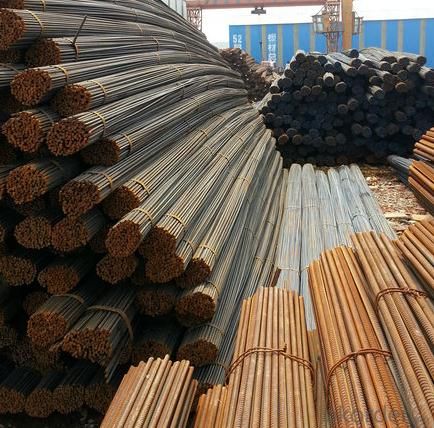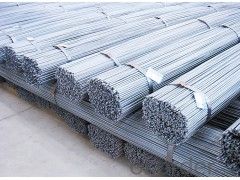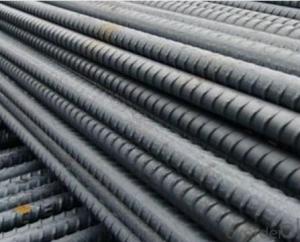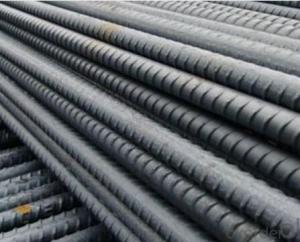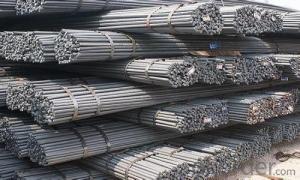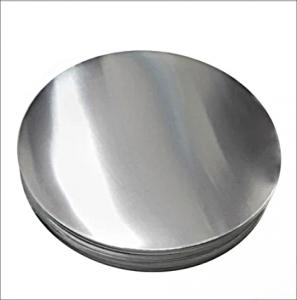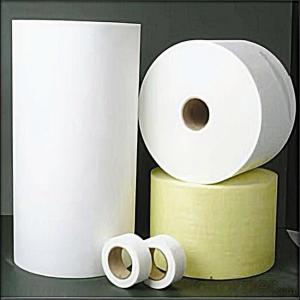Rebar Near Me for Sale - Deformed Steel Bar for Construction
- Loading Port:
- Tianjin
- Payment Terms:
- TT OR LC
- Min Order Qty:
- 10000 m.t.
- Supply Capability:
- 100000 m.t./month
OKorder Service Pledge
OKorder Financial Service
You Might Also Like
Specification
OKorder is offering high quality deformed steel bar deformed steel bar for constructionat great prices with worldwide shipping. Our supplier is a world-class manufacturer of steel, with our products utilized the world over. OKorder annually supplies products to European, North American and Asian markets. We provide quotations within 24 hours of receiving an inquiry and guarantee competitive prices.
Product Applications:
Deformed steel bar deformed steel bar for construction for construction are ideal for structural applications and are widely used in the construction of buildings and bridges, and the manufacturing, petrochemical, and transportation industries.
Product Advantages:
OKorder's deformed steel bar are durable, strong, and resist corrosion.
Main Product Features:
· Premium quality
· Prompt delivery & seaworthy packing (30 days after receiving deposit)
· Corrosion resistance
· Can be recycled and reused
· Mill test certification
· Professional Service
· Competitive pricing
Product Specifications:
Specifications of Deformed Steel Bar:
Standard | GB | HRB335, HRB400, HRB500 | |
UK | G460B, B500A, B500B,B500C | ||
USA | GR40, GR60 | ||
Diameter | 6mm,8mm,10mm,12mm,14mm,16mm,18mm,20mm, 22mm,25mm,28mm,32mm,36mm,40mm,50mm | ||
Length | 6M, 9M,12M or as required | ||
Place of origin | Hebei, China mainland | ||
Application | building,construction,road,bridge etc | ||
Brand name | DRAGON | ||
Theoretical weight and section area of each diameter as below for your information:
Diameter(mm) | Section area (mm²) | Mass(kg/m) |
6 | 28.27 | 0.222 |
8 | 50.27 | 0.395 |
10 | 78.54 | 0.617 |
12 | 113.1 | 0.888 |
14 | 153.9 | 1.21 |
16 | 201.1 | 1.58 |
18 | 254.5 | 2.00 |
20 | 314.2 | 2.47 |
22 | 380.1 | 2.98 |
25 | 490.9 | 3.85 |
28 | 615.8 | 4.83 |
32 | 804.2 | 6.31 |
36 | 1018 | 7.99 |
40 | 1257 | 9.87 |
50 | 1964 | 15.42 |
Usage and Applications of Deformed Steel Bar:
Deformed bar is widely used in buildings, bridges, roads and other engineering construction. Big to highways, railways, bridges, culverts, tunnels, public facilities such as flood control, dam, small to housing construction, beam, column, wall and the foundation of the plate, deformed bar is an integral structure material. With the development of world economy and the vigorous development of infrastructure construction, real estate, the demand for deformed bar will be larger and larger..
Packaging & Delivery of Deformed Steel Bar:
Packaging Detail: products are packed in bundle and then shipped by container or bulk vessel, deformed bar is usually naked strapping delivery, when storing, please pay attention to moisture proof. The performance of rust will produce adverse effect.
Each bundle weight: 2-3MT, or as required
Payment term: TT or L/C
Delivery Detail: within 45 days after received advanced payment or LC.
Label: to be specified by customer, generally, each bundle has 1-2 labels
Trade terms: FOB, CFR, CIF
Deformed Steel Bar in Coil
Produce Line of Deformed Steel Bar
Q1: How soon can we receive the product after purchase?
A1: Within three days of placing an order, we will begin production. The specific shipping date is dependent upon international and government factors, but is typically 7 to 10 workdays.
Q2: What makes stainless steel stainless?
A2: Stainless steel must contain at least 10.5 % chromium. It is this element that reacts with the oxygen in the air to form a complex chrome-oxide surface layer that is invisible but strong enough to prevent further oxygen from "staining" (rusting) the surface. Higher levels of chromium and the addition of other alloying elements such as nickel and molybdenum enhance this surface layer and improve the corrosion resistance of the stainless material.
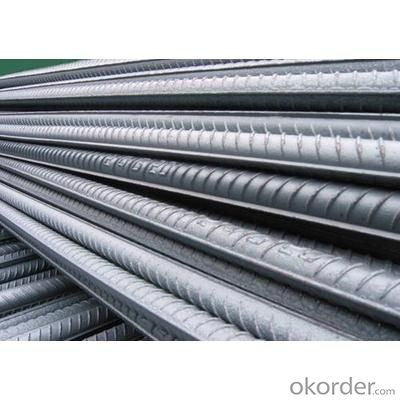

- Q:What does "4EDT6" mean on thread steel?
- It is a kind of flat steel with a wide thickness and a large surface area. According to the thickness of different thickness of thin sheet (thickness <4mm), medium plate (thickness 4-25mm) and thick plate (thickness >25mm) three. The steel strip is included in the steel plate.
- Q:Are steel rebars suitable for reinforcement in airport runways?
- Yes, steel rebars are suitable for reinforcement in airport runways. They provide excellent strength, durability, and resistance to heavy loads and impacts, making them an ideal choice for ensuring the structural integrity and safety of airport runways.
- Q:How do steel rebars help in reducing construction time?
- Steel rebars contribute to the reduction of construction time in several ways. Firstly, they enhance the strength and durability of concrete structures, enabling builders to employ quicker construction techniques. This obviates the necessity for slower and more time-consuming methods as the rebars provide sufficient support for the structure's weight. Secondly, the reinforcement of concrete with steel rebars enhances the overall structural integrity of the building. Consequently, builders can employ thinner concrete sections without compromising the structure's strength. These thinner sections require less material and can be poured and cured more rapidly and easily, thus saving construction time. Thirdly, the installation of steel rebars is a speedy process due to their easy handling and installation characteristics. They can be conveniently cut and bent to fit the desired shape and size, facilitating efficient installation. Consequently, the requirement for complicated and time-consuming formwork is eliminated, resulting in a reduction in construction time. Fourthly, steel rebars offer design and construction flexibility, enabling the utilization of innovative and efficient building techniques. They can be utilized in a variety of applications, including beams, columns, and slabs, granting architects and engineers the freedom to design structures that can be rapidly and efficiently constructed. Lastly, steel rebars provide additional resistance to natural disasters such as seismic activity and extreme weather conditions. By reinforcing concrete with rebars, structures become more resilient, reducing the risk of damage and expediting the construction process. This is particularly crucial in areas that are prone to earthquakes or adverse weather conditions. In conclusion, steel rebars play a pivotal role in reducing construction time by providing strength, durability, flexibility, ease of installation, and the ability to reinforce concrete structures. These qualities facilitate faster construction methods and efficient use of materials.
- Q:How do steel rebars distribute loads in concrete structures?
- Steel rebars distribute loads in concrete structures by providing reinforcement and increasing the tensile strength of the concrete. The rebars are typically placed in the concrete in a grid-like pattern, creating a network of support throughout the structure. When the concrete is subjected to external loads, such as the weight of the building or the force of an earthquake, the rebars help distribute the load more evenly across the structure. This prevents the concrete from cracking or failing under the stress. Rebars work by transferring the tensile forces to the surrounding concrete. While concrete is strong in compression, it is relatively weak in tension. The rebars act as a reinforcement, resisting the tensile forces and preventing the concrete from cracking. When a load is applied to the structure, the rebars bear a portion of the load and distribute it to adjacent rebars and the surrounding concrete, effectively increasing the overall strength and stability of the structure. The distribution of loads in concrete structures is also influenced by the spacing and diameter of the rebars. Properly spacing the rebars ensures that the load is evenly distributed, minimizing the risk of localized stress concentration. The diameter of the rebars also plays a role in load distribution, as larger diameter rebars can withstand higher loads and provide more reinforcement. In addition to load distribution, steel rebars also help control the propagation of cracks within the concrete. When cracks do occur, the rebars help prevent them from spreading by transferring the stress around the cracked area and maintaining the structural integrity of the concrete. Overall, steel rebars play a critical role in distributing loads in concrete structures by providing reinforcement, increasing tensile strength, and controlling crack propagation. Their strategic placement and proper sizing ensure that the loads are evenly distributed, enhancing the durability and longevity of the structure.
- Q:What is the importance of proper alignment of steel rebars in a structure?
- Proper alignment of steel rebars in a structure is essential for several reasons. Firstly, it ensures the structural integrity and strength of the building. Rebars are designed to bear the load and reinforce the concrete, so if they are not aligned properly, it can weaken the structure and compromise its stability. Secondly, correct alignment of rebars helps distribute the load evenly and prevents stress concentration in specific areas. This helps in reducing the risk of cracks, deformation, and potential failure of the structure, especially during extreme conditions like earthquakes or heavy loads. Additionally, proper alignment of rebars facilitates efficient and effective concrete pouring and consolidation. It allows for the proper flow of concrete and ensures adequate coverage around the rebars, which enhances the bond between the steel and concrete and improves the overall durability of the structure. Overall, the importance of proper alignment of steel rebars cannot be overstated as it directly affects the safety, strength, and longevity of the building. It is crucial to adhere to the appropriate alignment guidelines and standards to ensure a robust and reliable structure.
- Q:Are steel rebars suitable for use in high-temperature applications?
- Steel rebars are generally not suitable for use in high-temperature applications. Although steel is a strong and durable material, it has limitations when exposed to high temperatures. At elevated temperatures, steel can undergo significant reduction in strength and may even experience a loss of structural integrity, leading to potential failures. When steel is exposed to high temperatures, it undergoes a process called thermal expansion, which can cause it to weaken and deform. This phenomenon is particularly prominent in rebars, which are often used as reinforcements in concrete structures. The high temperatures can cause the rebars to expand and exert excessive pressure on the surrounding concrete, leading to cracks and potentially compromising the structure's stability. Additionally, prolonged exposure to high temperatures can result in a loss of the steel's mechanical properties, including tensile strength and load-bearing capacity. This can significantly reduce the rebars' ability to resist external forces and effectively reinforce the concrete. Therefore, it is generally recommended to use alternative materials, such as stainless steel or special alloys, for high-temperature applications. These materials are specifically designed to withstand elevated temperatures without losing their structural integrity. It is important to consult with experts and engineers familiar with high-temperature applications to determine the most suitable materials for specific projects to ensure safety and structural stability.
- Q:Are there any limitations on the maximum length of steel rebars used in construction?
- There are restrictions on the maximum length of steel rebars used in construction, which can vary based on factors like structural design, construction codes, and transportation limitations. Generally, the length of steel rebars is limited due to practical considerations such as handling, transportation, and installation. Very long rebars can be challenging to transport and maneuver on construction sites, and they may also be more susceptible to bending or sagging, thus compromising their structural integrity. Consequently, construction industry standards and codes typically establish guidelines or restrictions on the maximum length of steel rebars to guarantee their safe and efficient utilization in construction projects. Architects, engineers, and contractors must adhere to these limitations to ensure the building's structural stability and safety.
- Q:How do steel rebars impact the overall construction cost estimation process?
- The overall construction cost estimation process is significantly influenced by steel rebars. These reinforcing bars play a crucial role in reinforced concrete structures, providing strength and durability to the building. Consequently, including them in the cost estimation is essential for accurately assessing the total project cost. To begin with, the material cost of the construction project is impacted by steel rebars. Rebars are typically priced based on weight, so the quantity and size of rebars required directly affect the material cost estimation. Accurately identifying and quantifying rebars is necessary to ensure an appropriate budget allocation for the project. Furthermore, labor cost estimation is also influenced by steel rebars. Skilled labor is required to install rebars, and the time and effort involved in cutting, bending, and placing the rebars must be taken into account. The complexity of the reinforcement design, such as intricate shapes or complex detailing, can increase labor costs. Therefore, accurately estimating rebars allows for better planning of labor resources and cost allocation. In addition to material and labor costs, steel rebars impact other aspects of the construction cost estimation process. For example, the weight and placement of rebars affect the structural design, which can influence the cost estimation of the concrete mix design and formwork requirements. The size and spacing of rebars may also impact the excavation and foundation costs, as well as the overall project timeline. Moreover, steel rebars contribute to the long-term costs of the construction project. The quality and durability of rebars directly affect the lifespan and maintenance requirements of the structure. Investing in high-quality rebars can reduce future maintenance and repair costs, as well as enhance the overall life cycle cost analysis of the project. To conclude, the overall construction cost estimation process is significantly impacted by steel rebars. Accurately estimating rebars is essential for determining material and labor costs, as well as influencing other cost-related aspects of the project. It allows for precise budget allocation, resource planning, and consideration of long-term costs, ultimately resulting in a more reliable and comprehensive construction cost estimation.
- Q:Can steel rebars be used in foundation repair work?
- Yes, steel rebars can be used in foundation repair work. Steel rebars are commonly used in reinforced concrete structures, including foundations, to provide additional strength and stability. They help to reinforce and strengthen the foundation, making it more resistant to cracks and structural damage.
- Q:What is the diameter of the cross section of the threaded steel?
- Upstairs method is also OK: use a rope around the thread steel for a week, and then take out the length of the string, that is, thread steel perimeter L, and then according to the perimeter formula, you can find the diameter of D=L/ Pi Pi =3.1415926.The most accurate way is to use a vernier caliper or a micrometer.
1. Manufacturer Overview |
|
|---|---|
| Location | |
| Year Established | |
| Annual Output Value | |
| Main Markets | |
| Company Certifications | |
2. Manufacturer Certificates |
|
|---|---|
| a) Certification Name | |
| Range | |
| Reference | |
| Validity Period | |
3. Manufacturer Capability |
|
|---|---|
| a)Trade Capacity | |
| Nearest Port | |
| Export Percentage | |
| No.of Employees in Trade Department | |
| Language Spoken: | |
| b)Factory Information | |
| Factory Size: | |
| No. of Production Lines | |
| Contract Manufacturing | |
| Product Price Range | |
Send your message to us
Rebar Near Me for Sale - Deformed Steel Bar for Construction
- Loading Port:
- Tianjin
- Payment Terms:
- TT OR LC
- Min Order Qty:
- 10000 m.t.
- Supply Capability:
- 100000 m.t./month
OKorder Service Pledge
OKorder Financial Service
Similar products
New products
Hot products
Hot Searches
Related keywords




